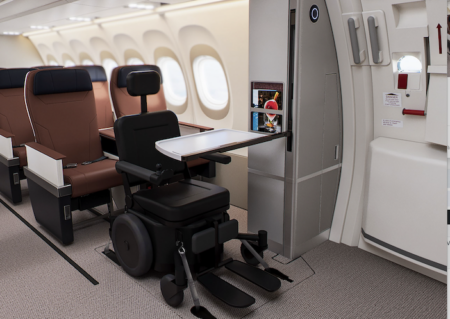The Crystal Cabin Award is the most prestigious prize that recognises innovation in aircraft design, the passenger experience, cabin technology, sustainability, and the wider aviation industry. The annual awards scheme has been recognising excellence in the aircraft interiors sector since 2007.
For 2025, the Crystal Cabin Award will again serve as a trend barometer for the aviation sector. Following a pre-selection process, the shortlist now features more than 50 innovations across seven categories, and the coveted trophies will be awarded on 8th April 2025 at a ceremony in Hamburg, as part of Aircraft Interiors Expo. The winners will be selected by an international panel of experts, and the first judging round has now begun.
New ideas for comfort, efficiency and sustainability
The Crystal Cabin Award provides a platform for innovative solutions that not only enhance passenger comfort and safety, but also promote efficiency and sustainability within the aviation industry.
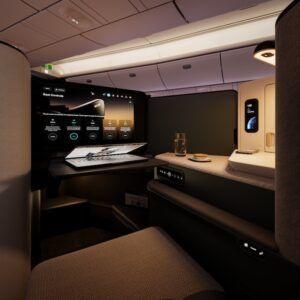
Notable entries for the 2025 awards include solutions such as Cathay Pacific’s Aria Suite, a business-class seat for the airline’s Boeing 777-300ER fleet developed in collaboration with JPA Design and Reaktor. The suite design (pictured above) enables passengers to control lighting, seat position, and crew communication via a synchronised system. Pre-programmed activity modes and integrated control units enable intuitive adjustment of comfort, and it even features an indicator of whether lavatory is vacant so passengers do not have to queue in the aisle.
Another entrant is Lufthansa Technik’s Haptic Dial, which is designed to redefine how inflight entertainment (IFE) is controlled, with a tactile feedback system allowing passengers to make precise adjustments without looking away from the screen – similar to the systems enjoyed by drivers of many luxury cars.
A dominant trend in cabins today is the integration of technology to improve cabin functionality, as seen in UNIO, a creation by Design Investment. UNIO is a standalone electronic component designed in the style of a desk lamp, which consolidates various Line Replaceable Units (LRUs) into one unit, simplifying seat manufacturing and maintenance. The design also offers airlines a customisable product that can be customised to reflect their brand identity across an aircraft fleet.
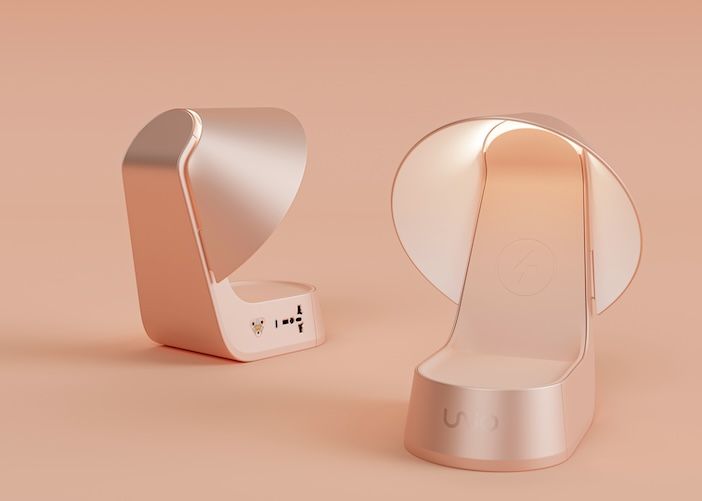
Healthy Motion Seating by Comfort Motion Global (CMG) is a patented technology designed for electrically adjustable seats in first and business class that offers physiological and psychological benefits for passengers. As it requires no additional hardware, the system reduces seat weight while also improving passenger well-being.
Cathay Pacific is also in the running with its Gallery in the Skies, which transforms the business-class cabins of its Boeing 777-300ER fleet into art galleries, showcasing works by artists with a strong connection to Hong Kong. The gallery underlines the importance of aesthetics and cultural identity in aviation.
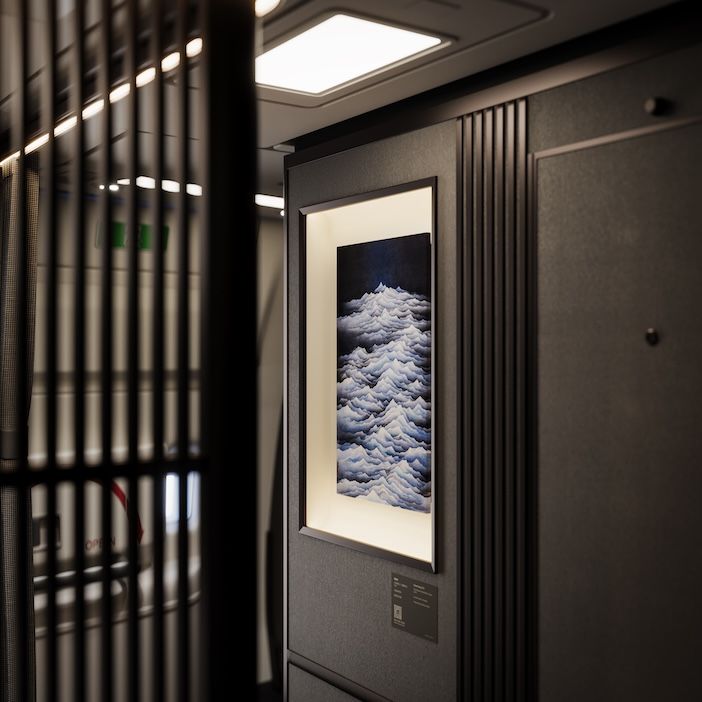
Sustainable innovations for a greener future in aviation
Entries in the Sustainable Cabin category of the Crystal Cabin Award focus on sustainability and circular economy, recognising innovations that can significantly reduce the environmental footprint of aircraft cabins. Many solutions emphasise recycling and resource conservation, with waste-reducing and energy-efficient technologies playing a central role.
For example, since autumn 2024, Air France has been equipping its Embraer 190 fleet with new, comfortable economy-class seats arranged in a 2-2 configuration. Developed with French manufacturer Expliseat, these lightweight seats help reduce fuel consumption and CO₂ emissions, reflecting the airline’s commitment to sustainability and modern comfort.
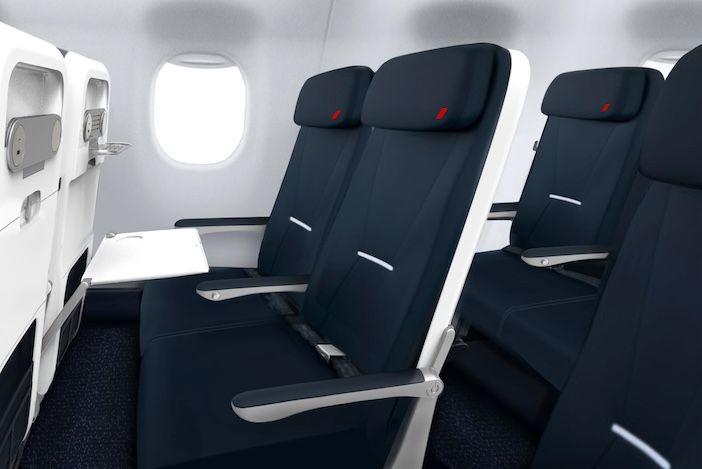
Krüger Aviation is in contention with an innovative recycled polycarbonate made entirely from production waste. Developed in cooperation with Green Mobility Interior and Airbus, the KRC PC 100 material meets stringent industry safety and quality standards, supports zero-waste production, and is versatile in applications such as sheets, granulates and filaments. The manufacturing process of the polycarbonate utilises renewable energy, further reducing its CO₂ footprint.
Recycled materials are also gaining prominence in aircraft textiles and surfaces. For example, Mohawk Group’s EcoFlex InFlight carpet offers a sustainable, efficient alternative to traditional carpeting. Mohawk says the modular design simplifies installation, and the polyolefin backing contains at least 40% recycled content, making it PVC-free and environmentally friendly. The product is manufactured in an energy-efficient facility in Virginia, USA, and is fully recyclable at the end of its life.
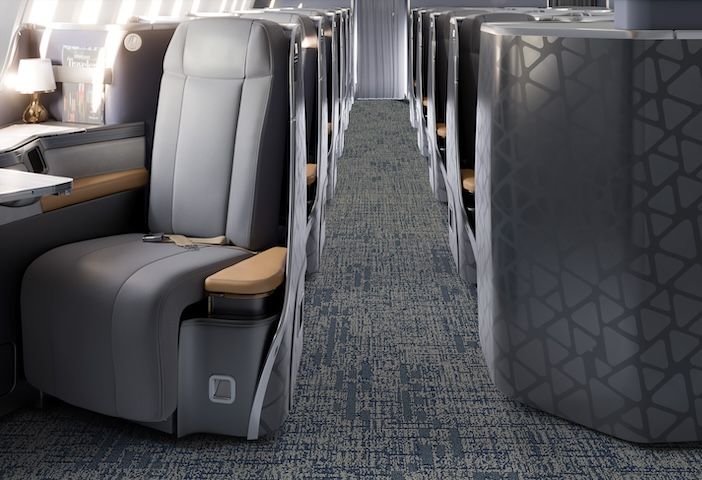
Another shortlisted collaboration is between Boeing, Adient Aerospace, Botany Weaving, and LanzaTech, who have co developed innovative aircraft seat fabric materials made from CO₂ waste.
Surface solutions will also be assessed by the judging panel, such as Peter/Lacke’s 2PL² eco-friendly coating, and Boxmark Leather’s Sustainable Leather Innovation, both reducing the environmental footprint of aircraft interiors.
Accessible solutions for all passengers
Disabled travel is another hot topic today, with campaign groups and, governments and airlines now making real progress towards a safer, more dignified travel experience. The Accessibility category of the Crystal Cabin Award focuses on innovations that improve comfort and accessibility for all passengers, including those with physical impairments.
For example, Collins Aerospace’s Prime+ Cabin Platform System enables wheelchair users to remain in their wheelchairs throughout the flight, providing a safe, dignified and comfortable travel experience. The system also enhances efficiency by not reducing cabin seat capacity, and it can also serve as a workstation for crew.
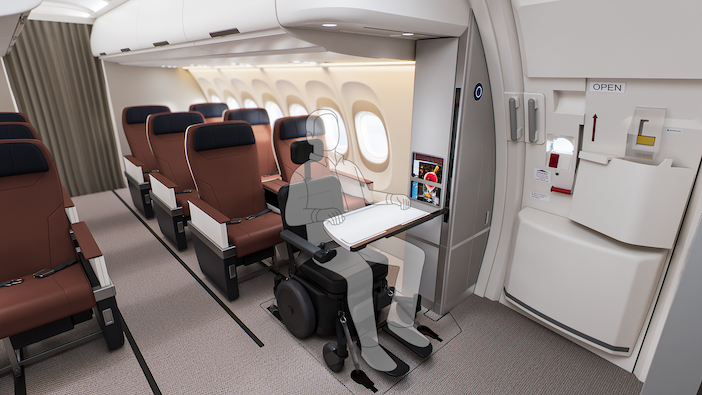
Another great idea is Delta Flight Products’ Inclusive Lavatory, with accessibility features designed for single-aisle aircraft and supporting a wide array of functions for disabled passengers.
Meanwhile Diehl Aviation’s Space³ concept features a fully accessible cabin layout with four lavatories and four additional seats, optimising space while significantly reducing overall weight through intelligent structural design.
The moving map is one of the most popular features of IFE systems. FlightPath3D’s Accessibility Map offers a user-friendly, high-contrast map that helps passengers with visual, motor, cognitive or auditory impairments to navigate the moving map more easily.
The University category: innovative concepts for comfort and accessibility
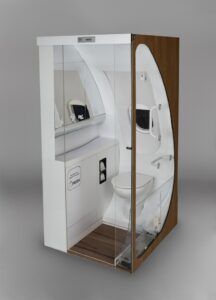
Entries in the University category for 2025 aim to revolutionise comfort and accessibility in aviation. For example, a team from the UDIT university in Madrid has devised R.A.I.S.S (Restroom Autonomous In-flight Sanitising System), which offers a groundbreaking solution for in-flight lavatory hygiene, featuring an autonomous robot that cleans the floor after each use. The cabin also features integrated interactive screens, an island-style sink, and a self-cleaning toilet system, to improve functionality and passenger comfort.
HAW Hamburg, in collaboration with Diehl Aviation, has put forward the Single Aisle Lavatory Door 1, which enhances accessibility for passengers with reduced mobility in narrow cabins.
A team from Tongji University in Shanghai has imagined the Ultra-lightweight Display System, which uses small projectors and gesture control to reduce weight and space compared to traditional IFE screens, while offering passengers an interactive experience.
The University of Cincinnati’s Air Nova concept is a modular AI-powered system that enhances the flight experience with personalised lighting, automated service requests, and a holographic interface.
Another entry is the Inclusive Economy Aircraft concept, developed by students from the American University of Beirut (AUB) and the Arts University Bournemouth, which focuses on accessibility and comfort in economy class. The concept cabin features wide aisles with foldable seats, expandable lavatories, and dedicated zones for passengers with mobility challenges or sensory sensitivities, complemented by quiet and family-friendly zones.
Crystal Cabin Award 2025: ceremony and jury
The seven categories of the Crystal Cabin Awards 2025 comprise Accessibility, Cabin Technologies, IFEC & Digital Services, Passenger Comfort, Sustainable Cabin, University, and the new ‘Judge’s Choice Airline Innovation’ category. The 28 jury members (including Adam Gavine, editor of Aircraft Interiors International) will select three finalists in each category, which will be announced in February 2025.
The finalists will present their concepts to the judging panel in person at a special session before Aircraft Interiors Expo (8–10 April 2025 in Hamburg). Following a further round of voting, the winners will be announced at a gala dinner at the Grand Elysée Hotel in Hamburg on 8th April.
